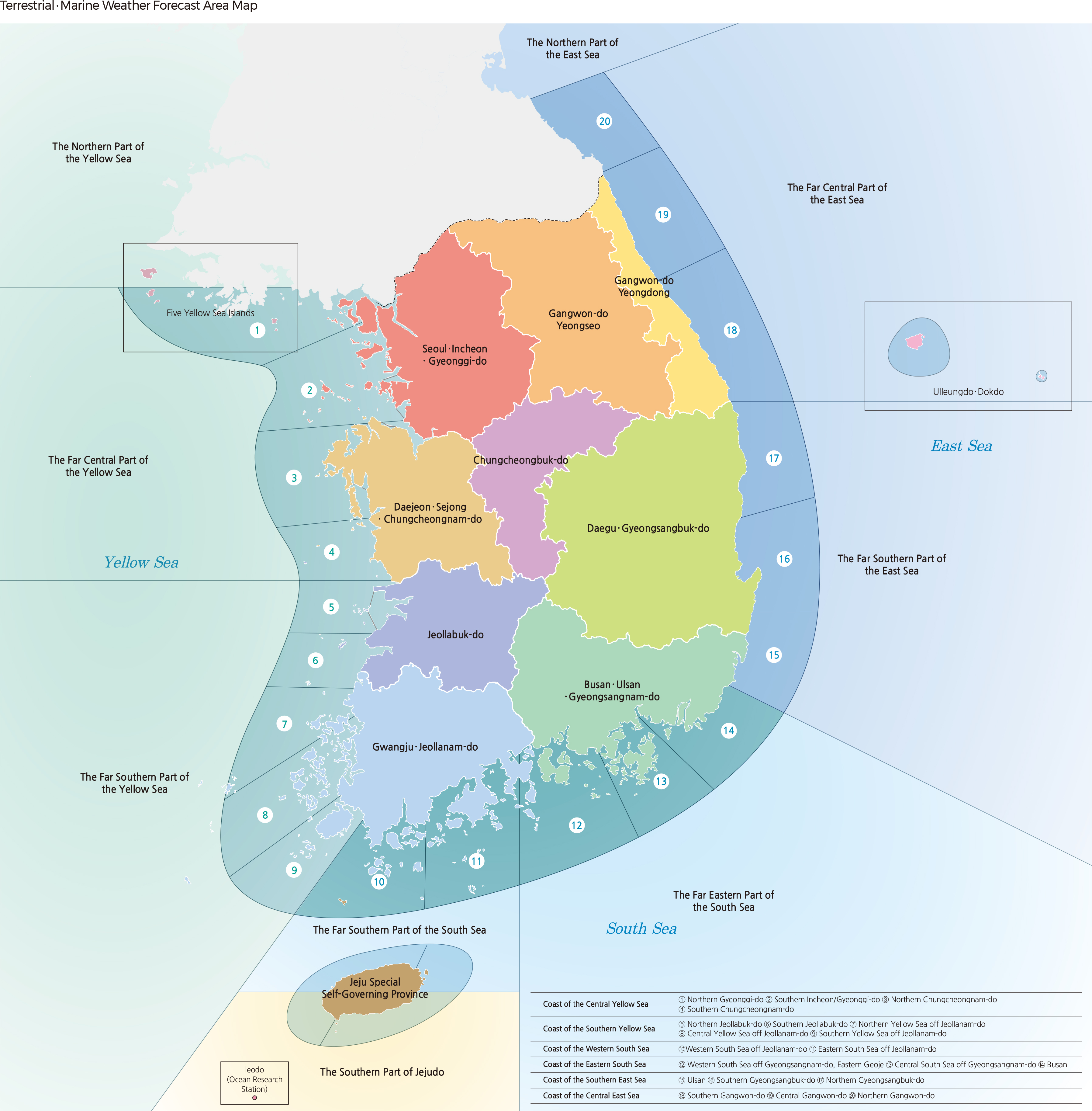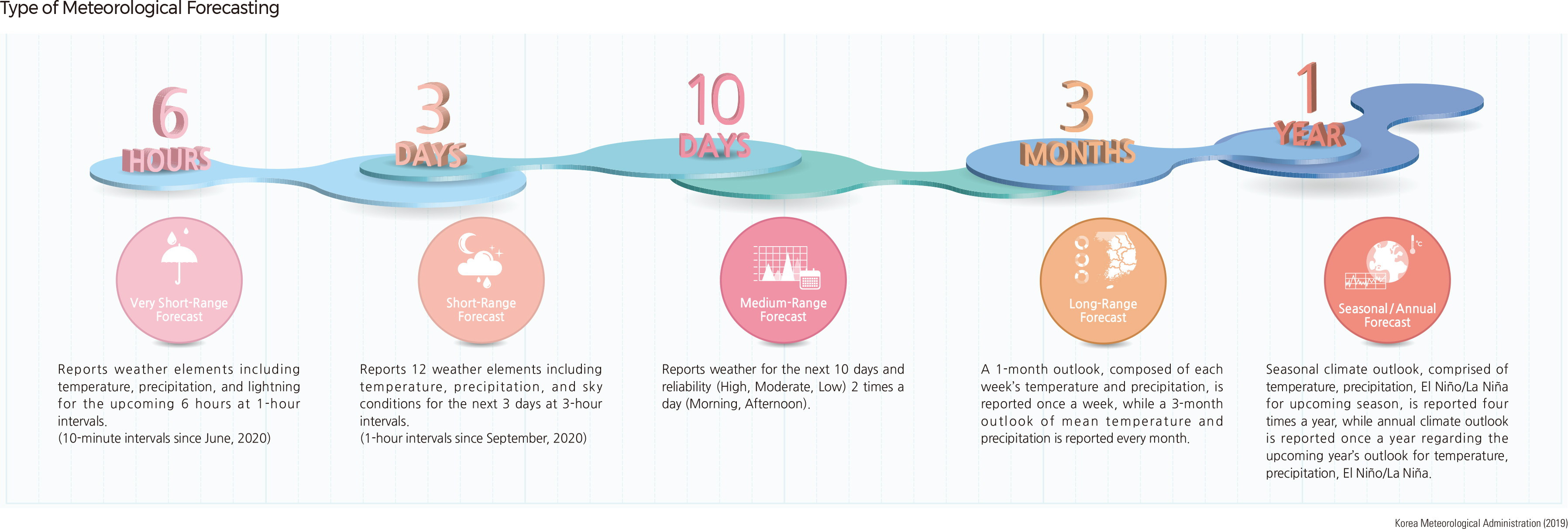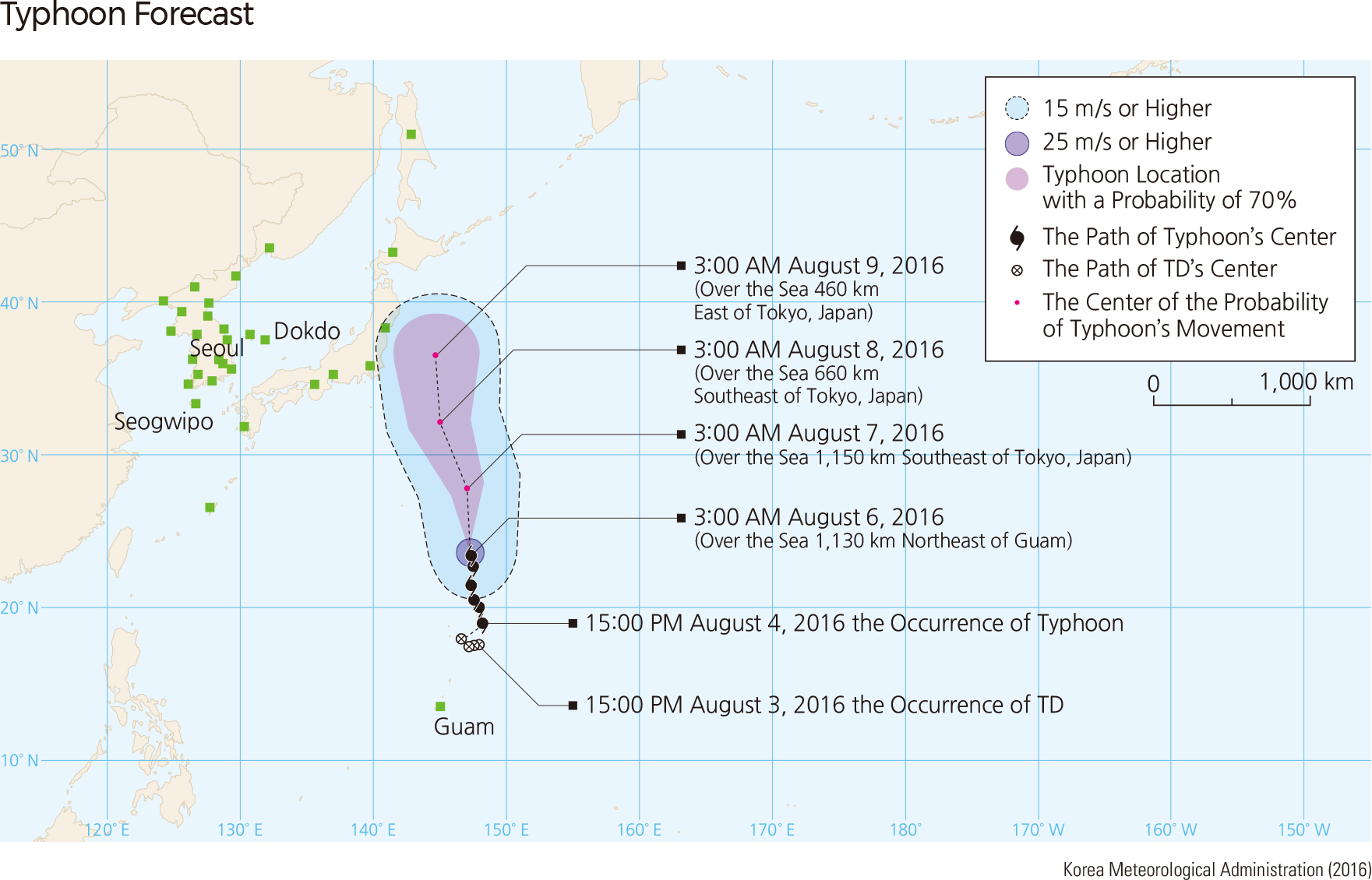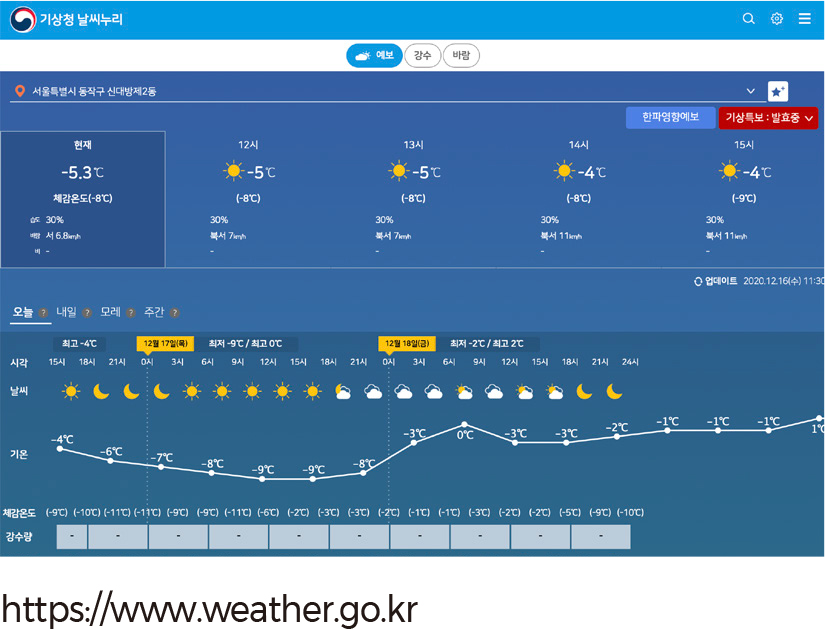English II 2020
National weather data are collected in a central server of supercomputers and shared with member nations of the World Meteorological Organization (WMO) in real-time. These data are assimilated for the production of various numerical models through supercomputers. Then, trained forecasters with expertise and experience examine current atmospheric conditions based on the observations and analyze the numerical weather prediction models comprehensively. Finally, forecasters across the country consult and exchange opinions via videoconference to make a final forecast decision. The land forecast zone is divided into 12 wide-area forecast zones, 170 local forecast zones, 18 detailed special weather report zones, and neighborhood forecast zones for over 3,500 towns. The marine forecasting zone is divided into nine marine forecasting zones, which are further divided into 19 marine wide-area forecasting zones, such as the far sea and offshore. The marine local forecasting zone is divided into 25 offshore zones.
Special weather reports are issued as weather advisories for possible natural disasters. A report is issued as either a watch or a warning, depending on the risk level of the following 11 natural disasters: heavy rainfall, heavy snowfall, storm surge, tsunami, typhoon, strong winds, high seas, Asian dust, drought, cold wave, and heat wave. A preliminary weather advisory is issued ahead of a special weather report to help people prepare for meteorological disasters.
A heat wave impact forecasting system provides information on the heat waves and countermeasures by detailed field (health, industry, livestock, agriculture, aquaculture, and other) by risk level. This system supports disaster prevention work by providing practical information to reduce heat wave-related damage and aims to realize a better weather forecast service centered on the people by providing information that takes into account the social and economic impact caused by heat waves. This forecast is announced once a day (11: 30 pm the day before) in specific areas (by si- and gun-units, but mountainous areas and some island areas are designated separately) when heat waves above the watch level are expected. |








